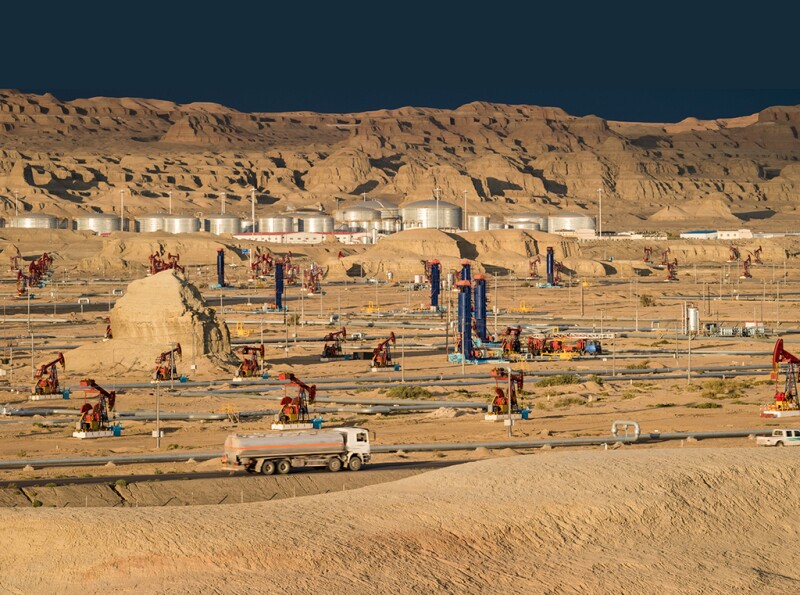China has spudded the country’s first ultradeep scientific exploration well exceeding 10,000-m depth as drilling began 30 May on CNPC’s Take-1 borehole in the Fuman oil field which is situated in the Taklamakan Desert of the Xinjiang Uygur autonomous region.
CNPC (China National Petroleum Corp.) operates Fuman, which produced a third of Xinjiang’s Tarim Basin oil output in 2022, and aims to drill to a design depth of 11,100 m in record time using its own automated drilling rig equipped to cope with the extreme temperatures and pressures found in Northwest China, China state media reported.
In its current Five-Year Plan, China aims to develop Fuman into a field capable of producing 35.7 million BOE annually by 2025. Fuman is the country’s largest ultradeep field and Tarim’s main crude oil production block, with reserves believed to exceed 71.5 billion bbl, according to CNPC.
Journey to the Center of the Earth
It took the Soviet Union 20 years to drill what is so far the world’s deepest well—the Kola Superdeep Borehole—which Russia sealed off and abandoned in 1992 after having reached a depth of 12,262 m (7.5 miles). There, drillers encountered 180°C (356°F) which deformed drill bits and pipes and made rocks so malleable they resembled plastic.
CNPC expects its new automated, 82-m-high, 2,000-ton rig to penetrate 11,100 m of over 10 layers of continental strata in a record 457 days, reaching rock from the Cretaceous period that formed 66 million to 145 million years ago.
China may be right to call its new drilling machine “the world’s first” automated rig capable of reaching 12,000 m considering details of its functionality. NOV built the Doyon 26, nicknamed “The Beast,” for Doyon Drilling to deploy on Alaska’s North Slope (Alpine field) under a long-term contract with ConocoPhillips, according to Tony Crawford, who worked nearly 2 decades in drilling and business development for Nabors in Alaska, Russia, and Kazakhstan, and in rig manufacturing for NOV in Russia and the US.
With the help of the “The Beast,” Alpine was the first North Slope field developed exclusively with horizontal well technology, accessing 50 square miles of subsurface from a single drilling pad, according to ConocoPhillips.
“It looks like the Chinese have created their ‘beast,’ have automated it, and added high-pressure and high-heat equipment,” said Crawford, who now owns Inerfuel, a Houston company that promotes nanO2 combustion catalyst to reduce carbon emissions in drilling. NOV’s “The Beast” is designed for extended-reach drilling and can reach a depth of 12,192 m, but with a drilling crew on board, he said.
“Nabors has a robotic rig that is fully automated, called PACE-R801, but its maximum drilling depth is about 6,500 m. Drillmec has automated control systems, but not automated pipe handling and (other) equipment.
“All the wells (where Doyon 26) is drilling are low to medium pressure, 5,000 psi or less, low to medium heat (50–80°C); nothing like China,” Crawford said of the North Slope. “The formations there are super soft; imagine drilling in clay mixed with sand.”
Western China in comparison is hot (between 120–180°C) and has high pressure.


